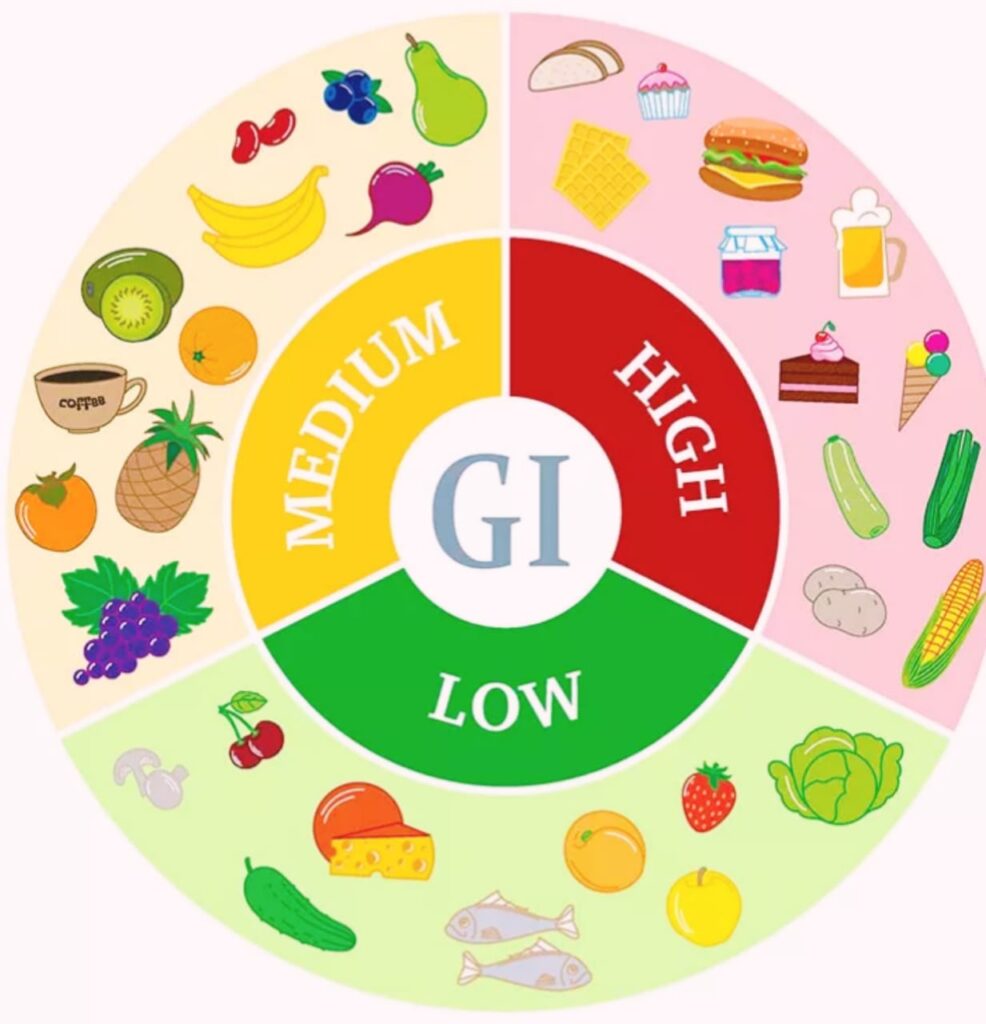The glycemic index (GI) is a scale in units assigned to a food for carbohydrates, with pure glucose value of 100, which represents the relative increase of carbohydrates in the blood sugar levels 2 hours after consuming that food. Low GI foods increase glucose levels gradually. High GI foods increase glucose levels instantly.
The GI scale ranges from 0 to 100. Pure glucose contains highest GI and is given a value of 100.
Having low GI foods can help you attain better control over your blood sugar. Monitoring the GI of foods can be another tool to manage diabetes, along with carbohydrate control and counting. A low-GI diet also helps with weight loss program.
Glycemic Index of Certain Foods discussed below:
Low GI foods (0 to 50):
- Barley
- Pasta, parboiled (converted) rice
- High-fiber bran cereal
- Oatmeal
- Quinoa
- Carrots, non-starchy vegetables, green vegetables
- Oranges, grapefruit, apples and many other fruits
- Legumes, nuts and beans
- Milk, yogurt and milk products.
Moderate GI foods (50 to 65):
- Pita bread
- Raisins
- Rye
- Brown rice
- Chapatti (whole wheat)
High GI foods (65 and higher):
- White bread
- Processed cereals and instant oatmeal, including bran flakes
- Roasted snack foods
- Potatoes(boiled, mashed)
- White rice
- Honey
- Pineapple, watermelon
For glycemic load, below 10 is said to be low, 11 to 20 is said to be medium, and above 20 is considered high.
Several factors are taken into consideration while assigning a food a glycemic rating.
These factors are stated below:
Acidity
Foods that are highly acidic, such as pickles, citric fruits tend to be lower on the GI than foods that are not. Hence the fact proves that breads made with lactic acid, such as sourdough bread, are lower on the GI than white bread.
Cooking Time
The longer a food is cooked, the higher its GI. When a food is cooked, the carbohydrates begin to break down more quickly.
Fiber Content
In general, foods that are high in fiber have lower glycemic index. The fibrous coatings around seeds and beans reveals that the body breaks them down more slowly and gradually.
Process
As a general rule, the more the food is processed, the higher it is on the glycemic scale. For example, fruit juice has a higher GI scale than fresh fruits.
Ripeness
The more the fruit or vegetable is ripe, the higher it tends to be on the GI.
Importance of GI in Diabetes:
The main purpose of GI is it helps us in monitoring the post meal blood glucose levels. This helps the patient to eat the choice of combinations of foods an individual can eat.
Effects of eating low GI foods:
- It helps in natural weight loss
- Helps keep cholesterol level under control
- It increases the body’s sensitivity to insulin
- Help refuel carbohydrate stores after intense exercise
- Reduces the risk of cardiac diseases
Effects of eating high GI foods:
- It can lead to interference with cell function
- It can increase the production of insulin
- Increases the risk for obesity and type 2 diabetes and it’s complications in uncontrolled Diabetes.
- Helps in accumulation of free fatty acid in the body
Hope this clarifies the importance of GI in our day to day life and also it’s role in Diabetes. Thus GI helps an individual especially suffering from Diabetes to chose the food wisely and monitor the blood glucose levels post lunch or dinner.
Glycemic Load : This is the actual value of GI x portion size.
Even if you eat low GI food but the portion size is more then your blood sugar levels will rise. In diabetes portion size per serving plays a very important role. so every diabetic should focus of Glycemic load rather than Glycemic Index only.
You can ask any doubts in comments. i will love to explain them
Have a great day







